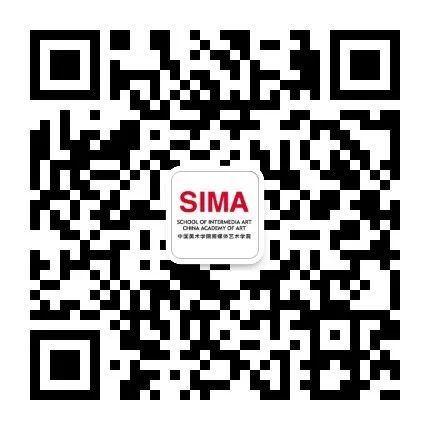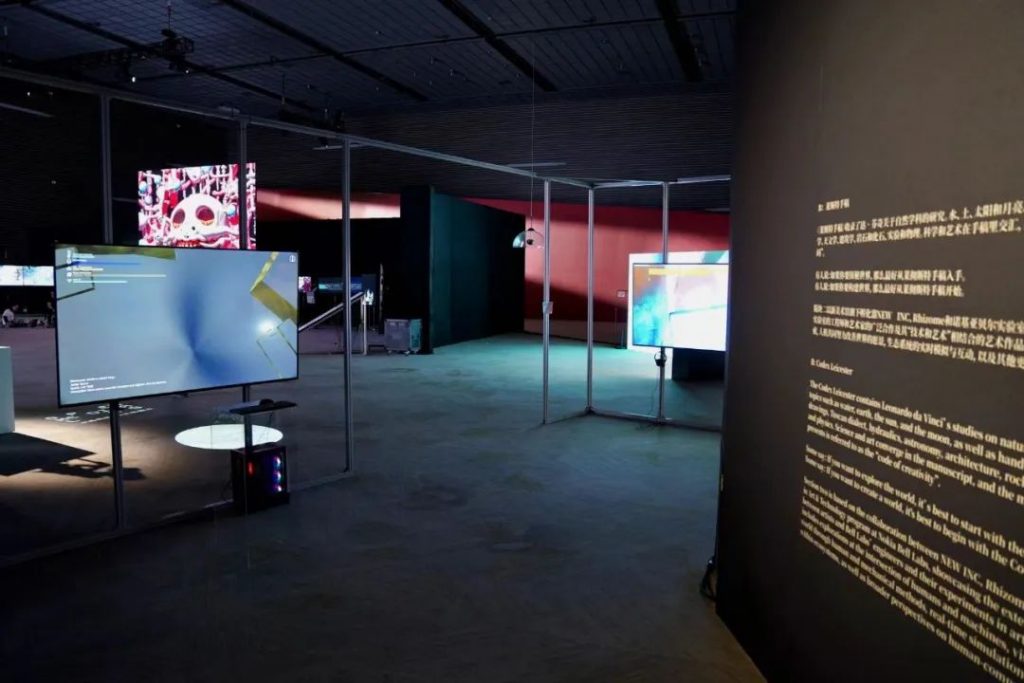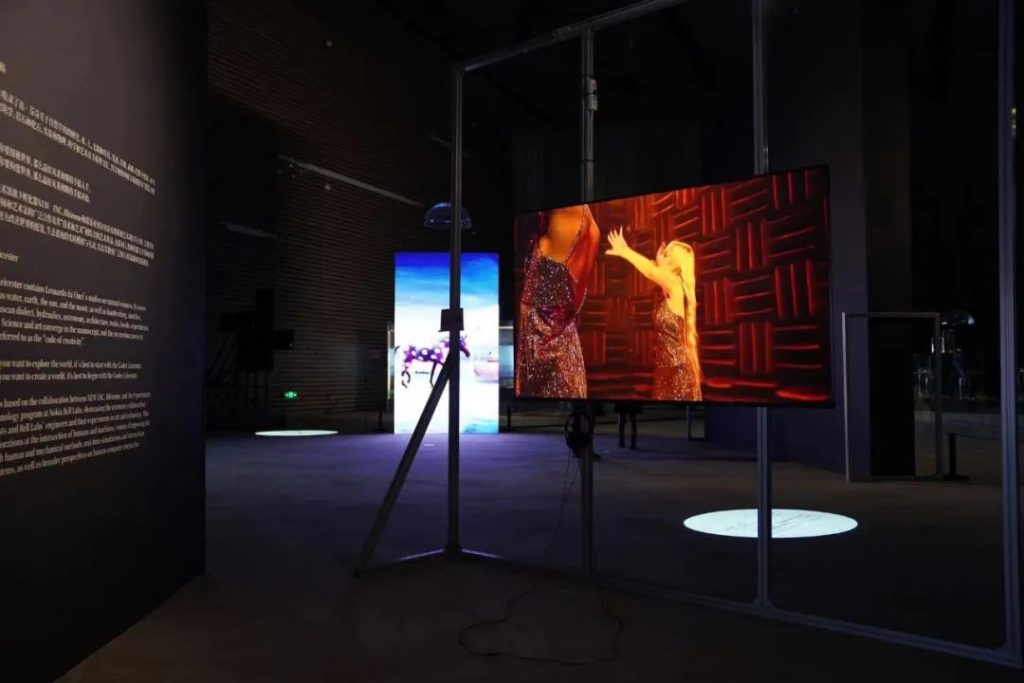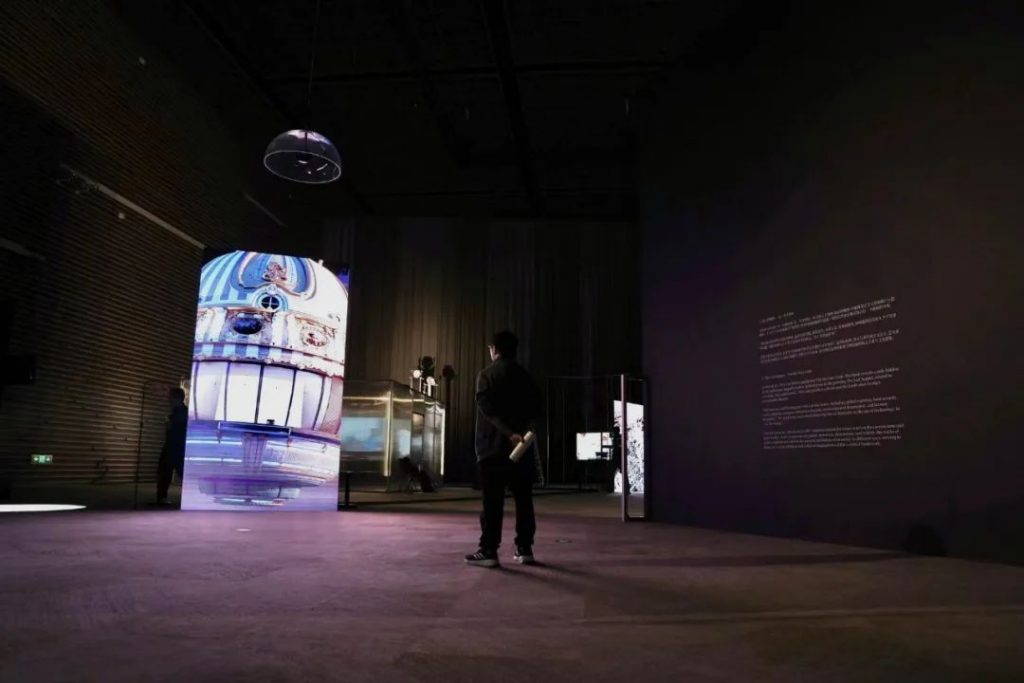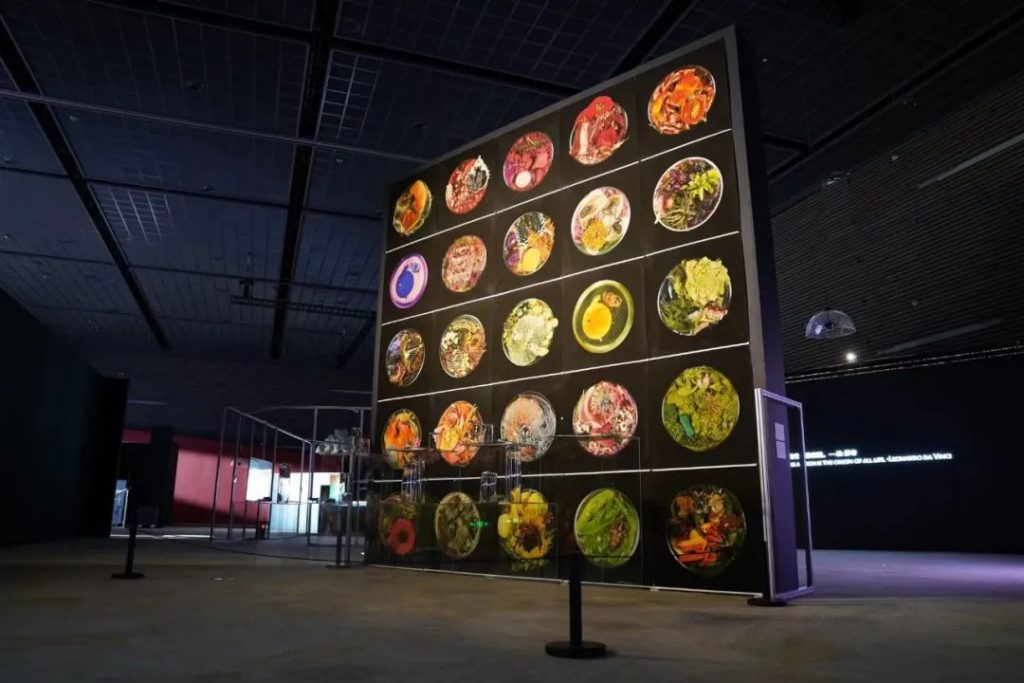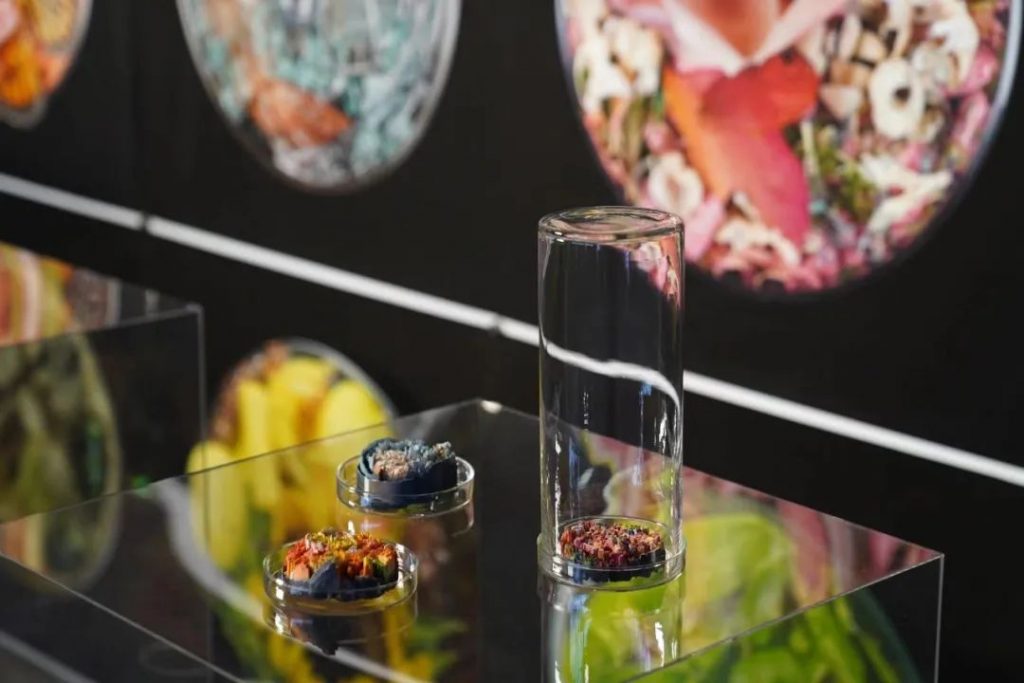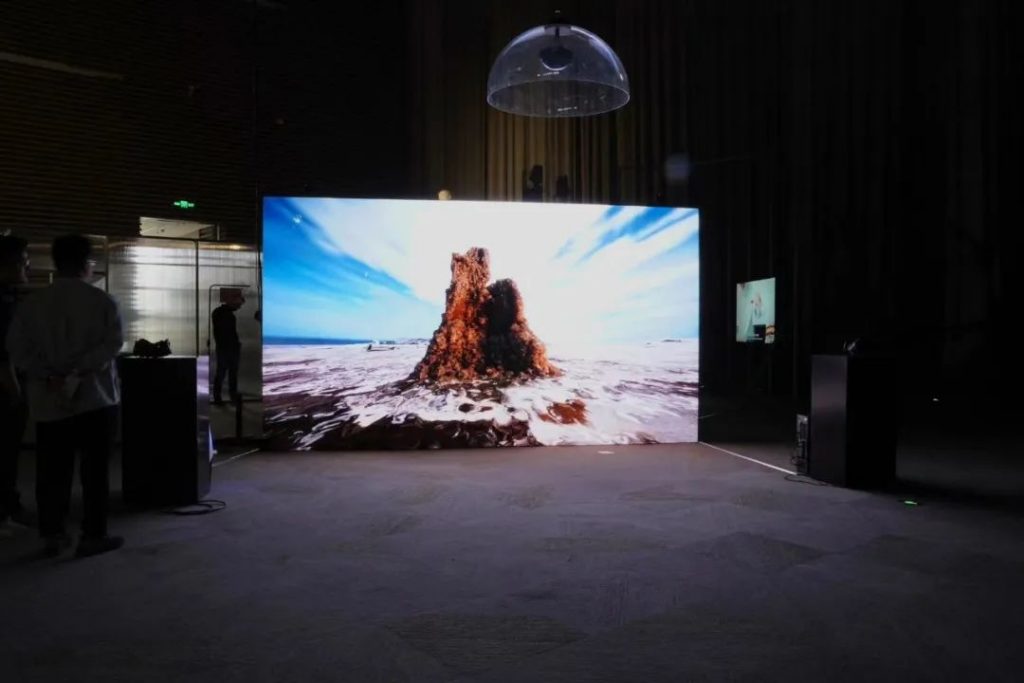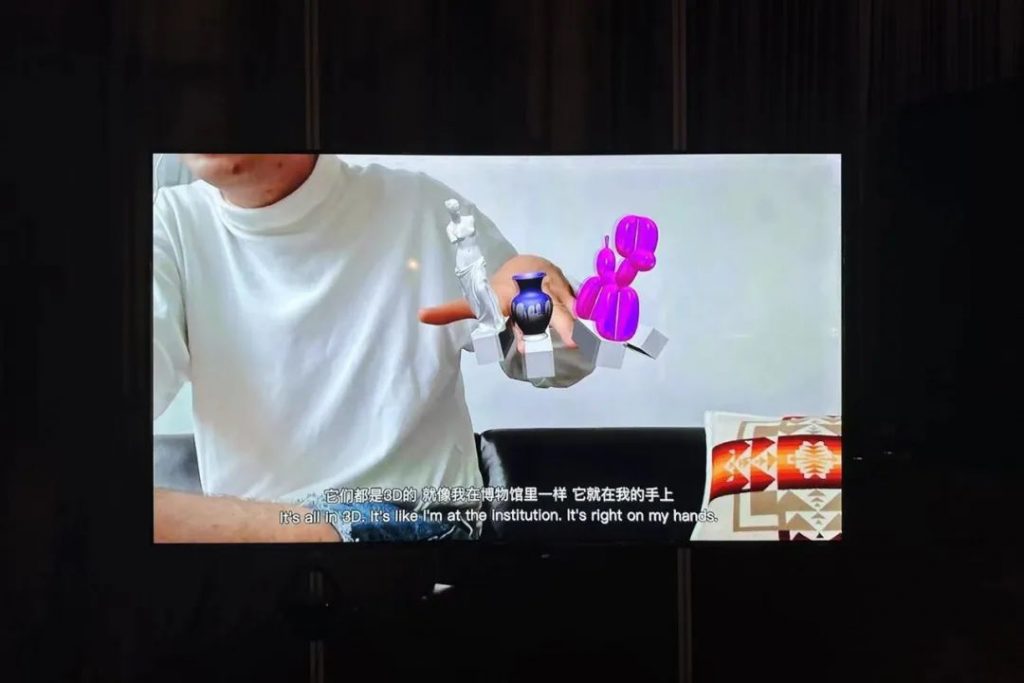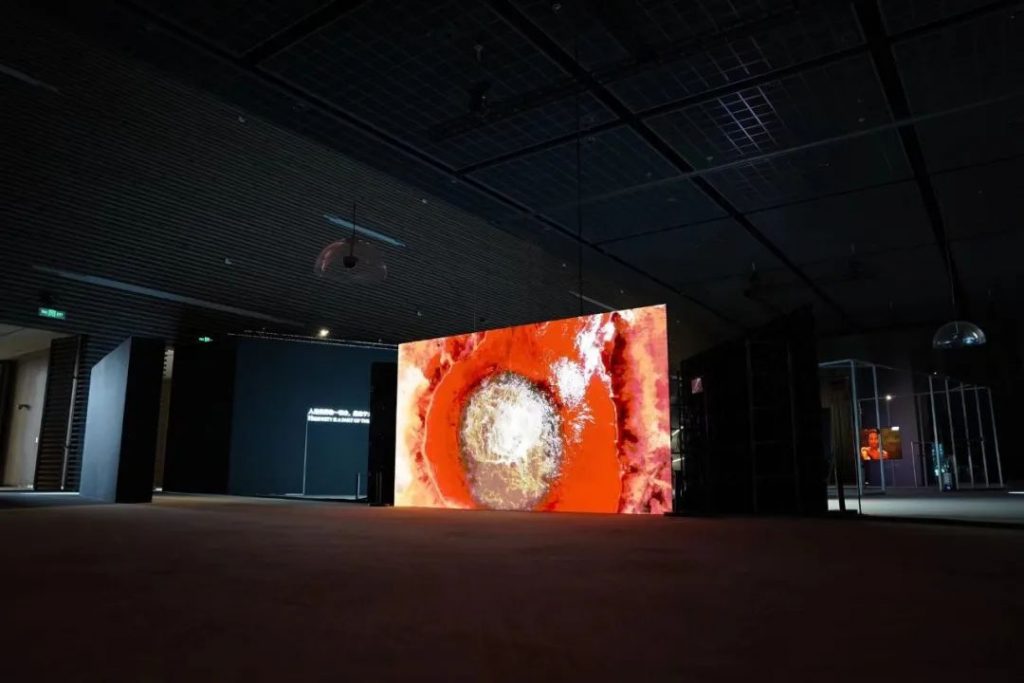
28 Mar The Interface Between Humanity and the Universe v3.0
天人之境 v3.0
The Interface Between Humanity and the Universe v3.0
The Interface Between Humanity and the Universe is the confluence of nature, technology, and human creativity. 追本溯源 Going back to the roots (curiosity), 钜细靡遗 leaving no detail unexamined (observational skills), and 无所顾忌 having no inhibitions (imagination) — the works of 12 artists (or groups) from around the world allow us to revel in the confluence of technology and the humanities amid the ever-shifting dizziness of existence. Ethics, morality, reflection, reverence, restlessness, yearning, and the lightness or heaviness of things in life that cannot be borne — the audience will also step into the intersecting realm of humans and machines through virtual reality and multi-channel real-time simulations. They will connect with broader perspectives of communication, co-create a future world, and pay homage to the initial version of “The Interface Between Humanity and the Universe” — Leonardo da Vinci and his Vitruvian Man, the Leicester Codex, and The Last Supper.
Artists:
Suzanne Anker, Jeremy Bailey, Andrew Demirjian,
Keiken, Kinlaw, Liu Xin, Jeroen van Loon,
Jonathan Monaghan, Mark Ramos + Wu Ziyang,
Sarah Rothberg, Jakob Kudsk Steensen, zzyw
Curator: Wu Ziyang
Curatorial Assistants: Yuan Mengru, Zhang Nuoxin
2023.10.28-2023.11.13 9:00-17:30
Zhangjiang Science Hall, No. 1393, Haike Road, Pudong New Area, Shanghai
Exhibition Sections
A: Vitruvian Man
Vitruvian Man is a story, a human, a drawing depicts a nude man in both a circle and square.
Ancient philosophers, mathematicians, and mystics have long believed that the circle and the square possess a mysterious symbolic power – the circle represents the universe and divinity, while the square represents the earthly and the secular. Vitruvian Man responds to the ancient metaphysical theory: man is the microcosm of the entire universe. This naked body is often used to convey various messages: the essence of human health, the power of geometry and mathematics, the ideals of the Renaissance, the beauty of art and technology, human potential, and the universality of the human spirit.
Toby Lester[1]‘s Vitruvian Man contains two stories: one is personal, the other is collective. The personal story belongs to Leonardo, a mysterious superhuman of the Renaissance, like a prophet or a magician, completely transcending his era. The second story is broader in scope, long and grand, spanning centuries, continents, and academic fields. Various characters, events, ideas, thoughts, and experiments come and go within it.
Section one presents the artist’s exploration of Vitruvian Man. How do we, with the minds of contemporary people, explore those “eternal questions”? How do we dwell within the grand order of the universe? The stack and fantasies of artists’ exploration, curiosity, reverence, and the worlds they present visually.
[1] Toby Lester is a contributing editor for The Atlantic and an author whose works include The Fourth Part of the World and Da Vinci’s Ghost.
The Bubble Theory

Keiken,2022,4K CGI video,7′55″
Credit: Keiken in collaboration with Clifford Sage and wavesovspace
Keiken’s “The Bubble Theory” CGI film is 7 minutes long and explores a fictional technology that allows the main character, Mother, to play with Uber 3000, a talking, self-driving car with in-built therapy. The technology enables Mother’s derivatives (versions of themself from different times in their life) to meet and understand each other. It visually displays the consciousness’ of Mother’s derivatives as bubbles, encouraging Mother to reflect on the complex and incremental moments from their past.
The White Stone
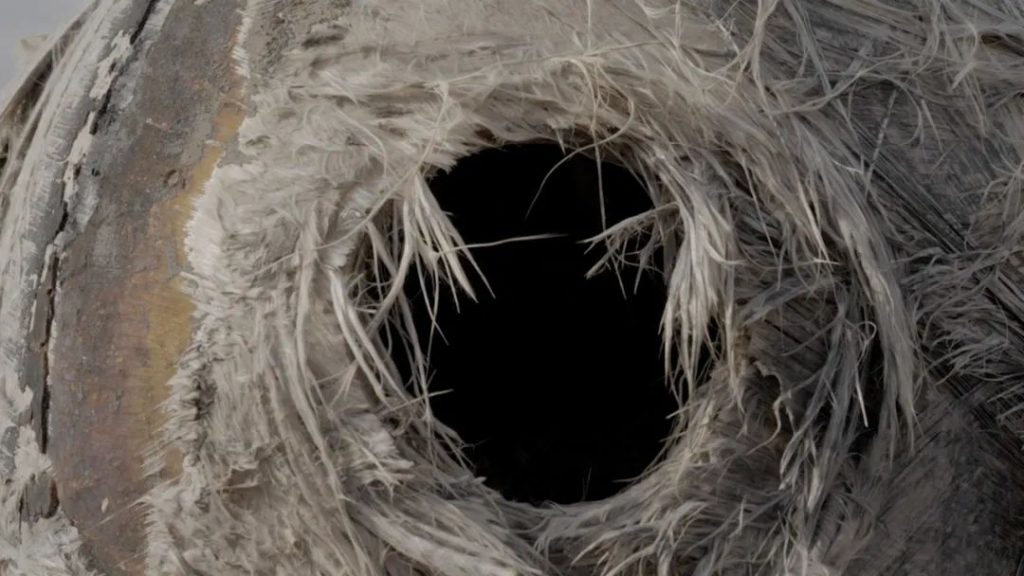
Liu Xin,2021,Video (color, sound),21′57″
When the rocket lifts off, her body falls. For centuries, humans have built worlds and cities on top of the ruins of the old ones. Now, we are entering an age where civilization is building a world at the highest point from the planet’s surface, the lower Earth orbit.
In this film, we postulate a future history of rocket debris abandonment and recovery, through a “hunt” for abandoned rocket debris in remote areas. The protagonist sets off across valleys and villages, and into the desert in the southwest of China, in a search for the debris of rockets fallen since the 1990s. She may find one, or she may never.
In this story, the white stone is the fallen body of a rocket. Shifting our gaze from the sky back to the ground, we reexamine the life span of technologies, marking the terrestrial death of an extraterrestrial object.
Other Spring
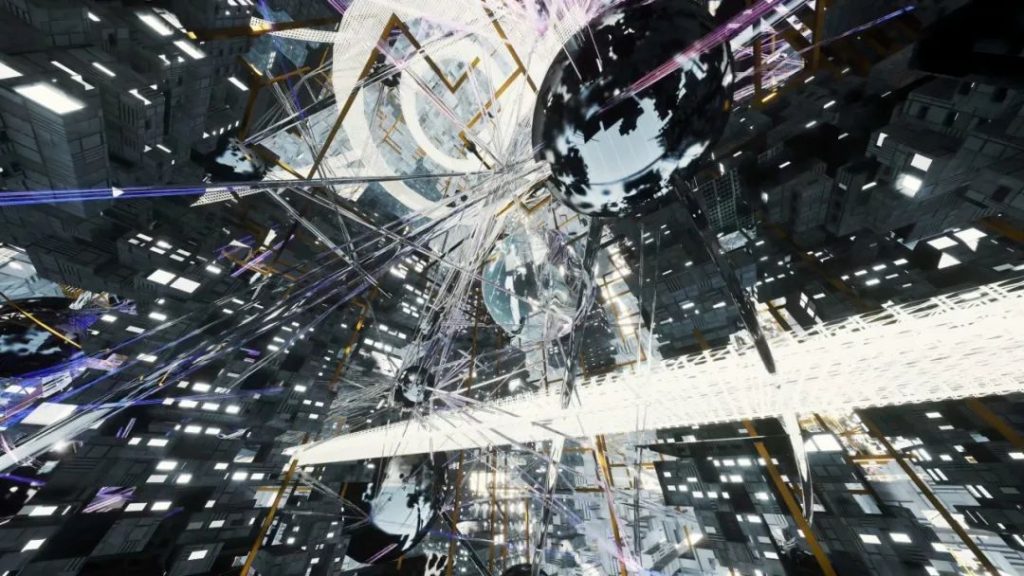
zzyw,2023,Video (color, sound),12′34″
“Other Spring” is a multifaceted project that critically investigates the societal implications of computational mediation, automation, and artificial intelligence. Inspired by the ancient Chinese fable 桃花源记 (peach blossom spring), the project comprises a research essay, a virtual world, and a short film exploring the potential of “heretic computing” (Galloway, 2020) to challenge the monolithic idea of efficiency, convenience, and data exchange that characterizes our contemporary information society. Set in a speculative future where an all-seeing, AI-driven network called UNO (Universal-Network Observer) dominates, the project reflects on the urgency of privacy, agency, and individuality in our increasingly interconnected world. The project’s structure is rooted in world-building, with two distinct worlds: UNO, the all-seeing, AI-powered automatic society, and Other Spring, an insulated local network protected by HAZE—a set of unique protocols and middleware embodying an alternative algorithmic design philosophy. HAZE allows Other Spring to remain invisible to UNO, fostering heterogeneity, individuality, and privacy security among its inhabitants. Drawing from research and engaging with architects, the project combines reality and speculative fiction to create a vivid, immersive experience that challenges our understanding of informatics societies and the power dynamics they entail. The urgency of the subject matter lies in the increasing influence of algorithms on our lives and the erosion of privacy and agency in the digital age. “Other Spring” offers a unique and unprecedented approach, melding academic rigor, creativity, and poetic language to shed light on the potential of heretic computing and alternative algorithmic landscapes. By highlighting the significance of opacity, intimacy, and intrinsic values in computational design, the project invites further dialogue with media theorists, artists, designers, and video game developers, ultimately promoting a more thoughtful and humane relationship with technology.
Team
Directed and Written by zzyw (Zhenzhen Qi and Yang Wang)
Production Team Credit:
Creative Producer: Matthew Doyle
Research Architect: Junling Zhuang
Worldmaking Architect: Mehrdad Ranjbar
UE5 Technical Art Generalist: Cecil Boey
Graphic Design / Film Editor: Qinru Zhang
Music Composer: Maxwell Sterling
Consultants:
Qifan Pu, Ph.D (Consultancy on Cryptography)
Kevin Chen, Ph.D (Consultancy on Cryptography)
Hanwen Zhang (Guest Critic)
Huiqi He (Consultancy on Cinematography)
Yuehao Jiang (Guest Critic)
B: Codex Leicester
The Codex Leicester[2] contains Leonardo da Vinci’s studies on natural sciences. It covers topics such as water, earth, the sun, and the moon, as well as handwriting, sketches, drawings, Tuscan dialect, hydraulics, astronomy, architecture, rocks, fossils, experiments, and physics. Science and art converge in the manuscript, and the mysterious power it presents is referred to as the “code of creativity”.
Some say: If you want to explore the world, it’s best to start with the Codex Leicester.
Some say: If you want to create a world, it’s best to begin with the Codex Leicester.
Section two is based on the collaboration between NEW INC, Rhizome, and the Experiments in Art & Technology program at Nokia Bell Labs, showcasing the extensive collaboration between artists and Bell Labs[3]’ engineers and their experiments in art and technology. This includes explorations at the intersection of humans and machines, visions of improving the world through human and mechanical methods, real-time simulations and interactions within ecosystems, as well as broader perspectives on human-computer interaction.
[2] Codex Leicester is a manuscript by Leonardo da Vinci, created between 1504 and 1508. It is in A4 format, measuring 298×223mm, with 18 double pages totaling 72 pages. Written in pink ink and mirror symmetry, the script is cryptic and enigmatic, like a puzzle or code.
[3] Bell Labs is one of the greatest laboratories of the 20th century. From transistors to lasers, from digital communication to cellular phones, various aspects of modern human life have been influenced by Bell Labs. It has produced 15 Nobel laureates, 7 Turing Award winners, and numerous other award recipients. Engineers at Bell Labs have also extensively collaborated with artists, curating influential exhibitions and producing artworks integrated with technology.
Recalibrating
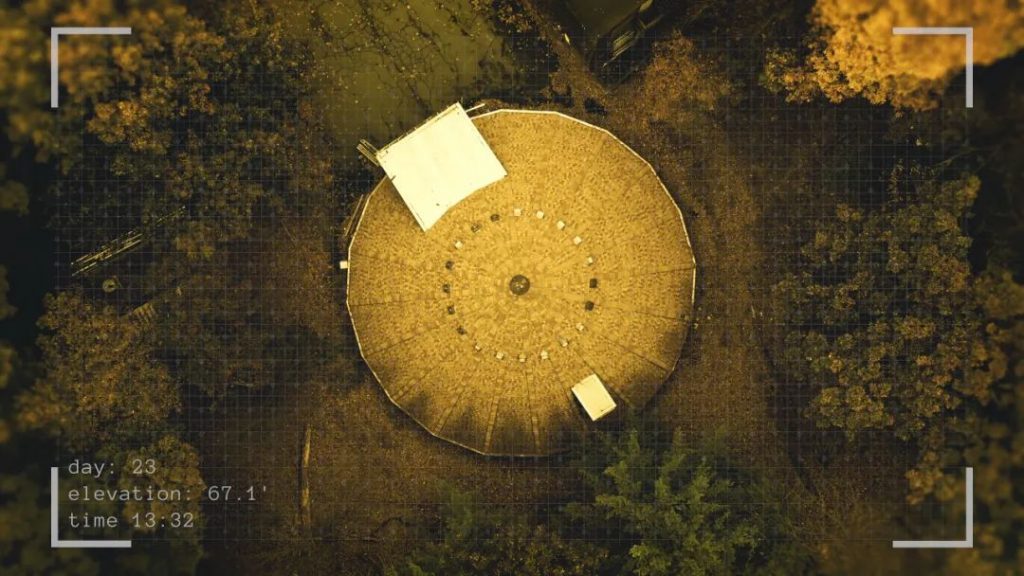
Andrew Demirjian,2021,Video (color, sound),11′37″
Co-commissioned by NEW INC, Rhizome and Bell Labs
An emergency response drone scours the landscape looking for human life in a future world. Announcements from the drone’s megaphone echo across the terrain as its onboard artificial intelligence system grapples with a world that was unimagined by its programmers. Unable to accomplish its encoded objective, the drone attempts alternative methods for achieving its goal. Extrapolating new research in Machine Learning, this work of speculative fiction explores notions of artificial curiosity and machine self-actualization through the lens of non-human consciousness, languages of communication and the poetry of interfaces.
From Nokia Bell Labs
At Bell Labs, we are interested in exploring the intersection of humans and machines. Instead of focusing on and amplifying the struggle between these two seemingly different parties, our research focuses on topics that show how humans and machines will come together to better the world. Our focus is not on how we can create machines that mimic our way of experiencing the world, but rather to see how our intelligence, capabilities and humanity can be augmented by these machines. We look to many areas including machine curiosity, machine learning, and machine intelligence to determine how we can best collaborate with machines to build a better world.
The Sigh of My Hand
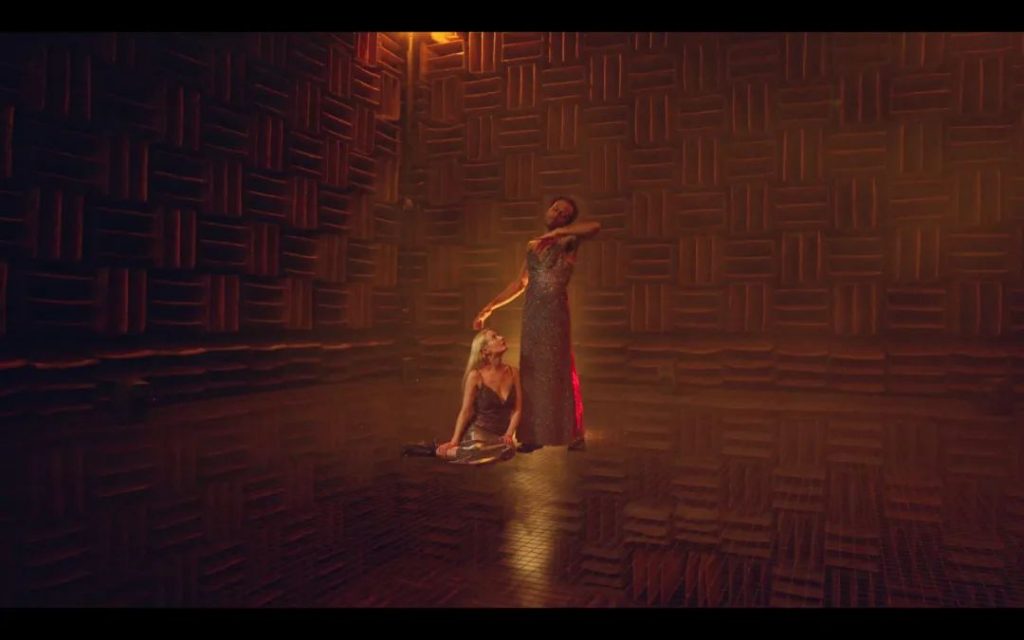
Kinlaw,2021,Audio Composition, Performance, Psychoacoustics,9′43″
Shot beautifully in the Anechoic Chamber at Bell Labs, a historic space once known as the quietest room in the world, Kinlaw’s The Sigh of My Hand culminated after a year’s worth of psychoacoustical research on site. During their residency, the artist spent long periods alone in the room, noticing their physical and psychological response to extreme silence. Kinlaw created The Sigh of My Hand, an original audio composition and performance video, in conversation with the rich history of the Experiments in Art and Technology program and their own body’s refusal to accept silence.
Credit:
Audio Composition, Choreography, Concept: Kinlaw
Performers: Kellian Delice & Kinlaw
Video Director: Kathleen Dyciaco
Executive Producer: Hannah Kinlaw
Director of Photography: Maddy Talias
Lighting: Taryn Blake Miller
Editor: Jon Ryan
Audio Mixing Engineer: James Hinton
Color Grader: Ben Federman
Creative Technologists: Danielle Mcphatter & Ethan Edwards from Experiments in Technology at Bell Labs
From Nokia Bell Labs
At Bell Labs we have always sought out better ways for humans to communicate. Our communication experiments often take form through 0s and 1s, and are presented through words spoken through a digital representation of our faces. However, we know that 70% of emotional human communication is non-verbal, and the subtle and subconscious language of our bodies, beyond just facial expressions, plays a critical role in how we come to understand each other. Kinlaw’s practice focuses on empathic potential and agency developed by bodily movement and performance. It is exactly this broader lens on human communication and connection that we have been exploring in this collaboration.
BEING IN REAL-TIME (or: SEEING LIKE A MACHINE / A MACHINE SEEING LIKE ME)
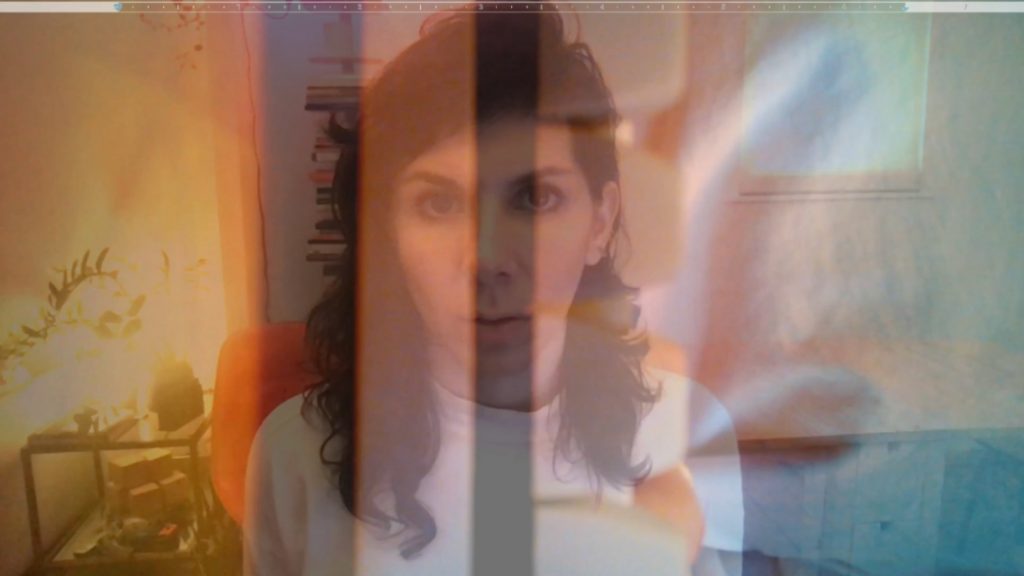
Sarah Rothberg,2021,Video (color, sound),4′27″
Co-commissioned by NEW INC, Rhizome and Bell Labs
Video Performance of a virtual talk documenting the presentation of a work-in-progress about computer vision, machine learning, and a custom app for a bespoke device created by Bell Labs called the eyebud.
Credit: With support from Bell Labs and technologists Ethan Edwards and Danielle McPhatter
From Nokia Bell Labs
As smart, wearable devices become more ubiquitous, we are entering a new era of interaction with the world around us. Within the next decade or so, we may witness the end of the smartphone era as wearable devices become the new norm. As technology develops in this space, these devices will become more embodied and provide augmented capabilities. Working with Sarah and this new wearable device has been eye opening: artists can take a device seemingly built for a very specific industrial purpose and reimagine its potential in a human-centric way. It is with these kinds of collaborations that we are able to see how to better create technology that improves the human condition.
Networked Ecosystem
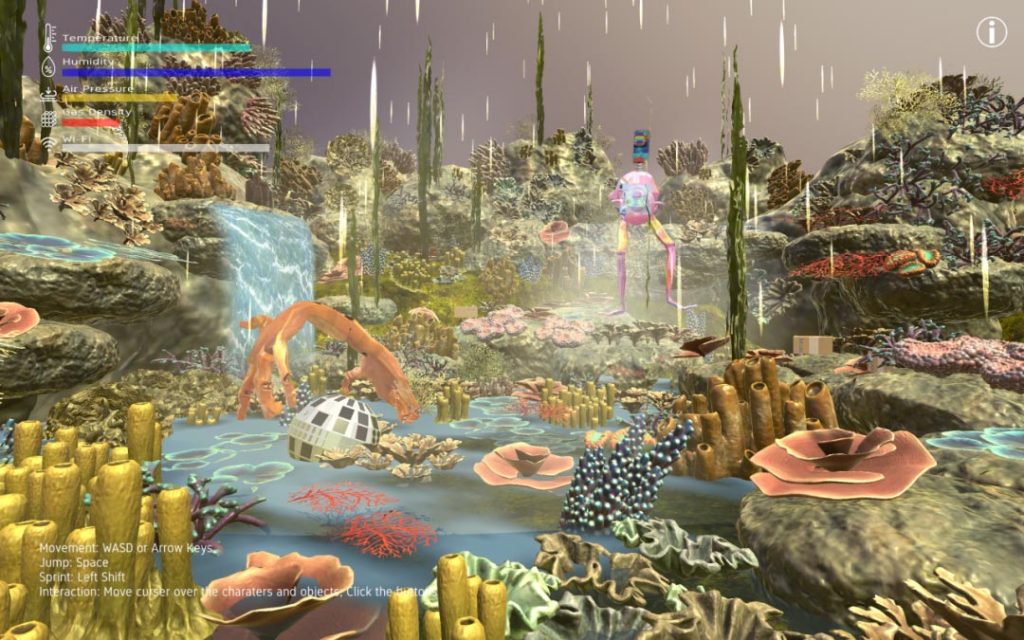
Mark Ramos & Wu Ziyang,2021,Live simulation and online environment,Infinite duration
Co-commissioned by NEW INC, Rhizome and Bell Labs
Networked Ecosystem is a live-simulation environment that presents an ecosystem built of a variety of digital senses. Commissioned by NEW INC at the New Museum, Rhizome and Nokia Bell Labs, Networked Ecosystem takes machine vision and sensing data collected by Bell Lab’s experimental robots and sensors and repurposes it to drive a 3D environmental simulation.
In Networked Ecosystem, natural phenomena have been replaced by digital and artificial systems as forces that drive development: Electricity/battery = sustenance, WIFI signals = nutrition, Lidar data = fire/heat. Data organisms populate this digital ecosystem as native life forms in the form of bots, AI’s, and avatars. Visitors to this networked landscape develop new kinds of digital senses to experience data as environmental changes, and interact with the simulated world and each other in an ever-changing online environment.
From Nokia Bell Labs
At Bell Labs, we are developing solutions that create smart enterprises. One of the most interesting areas of research is how to represent a complex ecosystem of multi-modal data to a user in a way that empowers them with understanding so they can easily take action. Data visualization often relies on static 2D bar charts and pie graphs to represent dynamic environments—methods that are not at all innate to the way that we, as humans, experience the world around us. We are happy to present Networked Ecosystems, a 3D world developed by Mark and Ziyang that lives, grows, and changes with the data—enabling new modes of more human-centric exploration.
C: The Last Supper – The Da Vinci Code
On March 18, 2003, Dan Brown[4] published The Da Vinci Code. The book reveals a code hidden in the half-moon-shaped window behind Jesus in the painting The Last Supper, related to astrology and mathematics. This code predicts a fresh start for Earth after facing a catastrophic disaster.
“Our current world is plagued with various issues, including global warming, food security, water pollution, rampant infectious diseases, environmental destruction, and income inequality”[5]. We need to be concerned about the fate of humanity in the age of technology, to “act for change”[6].
This section is an ‘astrological code’ implemented in the name of art on the current time and space nodes. At the crossroads of century transition, destruction, and rebirth, the works of artists confront and unlock the present and future of humanity in different ways, striving to shape new social relations and cultural imagination within a critical framework.
[4] Dan Brown, born in 1964 in New Hampshire, USA, is an author known for novels such as The Da Vinci Code, Angels & Demons, and Digital Fortress.
[5] Quoted from Roger T. Ames who is a visiting professor of humanities at Peking University and a Bolger Scholar. Available at: http://wenhui.whb.cn/zhuzhan/24wsjzxjxlft/20180821/209081.html (Accessed: September 8, 2023).
[6] Massumi, B. (2010). What Concepts Do: Preface to the Chinese Translation of “A Thousand Plateaus.” Deleuze Studies, 4(1), 7. Available at: https://www.jstor.org/stable/45331396
Vanitas (in a Petri dish)

Suzanne Anker,2013 – present,111.76 × 111.76 cm,Digital print
With new genetic technologies offering “cut and paste” methods intersecting the organic and synthetic, biology has achieved a golden age. Never before combinations of matter have been manipulated, creating unique entities in the animal, botanical and chemical worlds. In Vanitas (in a Petri dish), a careful arrangement of items removed from the natural world are combined with forms from the manufactured world and placed in Petri dishes. The Petri dish, a cultural icon, goes beyond its scientific value to represent a site for the emergence of what is hidden. It is a significant metaphor encapsulating environmental studies, political actions and cultural beliefs. In this installation 25 photographs are exhibited in grids referencing seventeenth-century Dutch still-life painting, which focuses on the vanity of material things, the temporality of life and a reminder of the inevitability of death (nature mort). During the Dutch Golden Age, as a result of market capitalism and colonialism, exotic luxuries were imported and celebrated. Vanitas paintings brought into sharp focus the conflict between the sacred and the profane. As a reminder that life goes beyond materialism, the Dutch painters included wilted flowers, bones, decaying matter et al. Today genes, cells and organs have comparable lucrative value. In my work the viewer is confronted with states of matter as interactions between their constituent elemental forms as they are reconfigured in laboratory settings.
Remote Sensing

Suzanne Anker,2013 – present,10.16 × 10.16 × 5.08 cm,Rapid prototype sculpture, plaster, resin, hand-painted acrylic paint and ink, petri dishes and glass vessels
Remote Sensing is a series of rapid prototype sculptures appearing as micro-landscapes. Produced with a 3D printer employing pigmented plaster and resin, the work takes its cue from the disastrous impact of toxicity and lethal conflict. The title of the project “Remote Sensing” originated from computer-generated Satellite data used to assess geographical areas that are too problematic or dangerous for human intervention. The fabrication of the work begins with photographing the still-life objects which create the Vanitas (in a Petri dish) series. These high-resolution images are then reprocessed with computer software programs which convert the photographs’ color arrays into 3D protrusions, a technique called displacement mapping. The machine builds the object layer upon layer, like the formations in sedimentary rocks, while simultaneously applying the color palette. The resulting chromatic perception is similar to the way a viewer experiences a painting. Dark colors recede while lighter hues advance, for example. The machine determines the application by “reading” color as a data set. Such results are unanticipated and surprisingly unique. Over time, however, the colors fade, since the pigments are not archival. To remedy this defect, each Remote Sensing sculpture is hand painted with acrylic paints and inks as necessary conservation measures. The resulting objects absorb new meanings as a still-life is transformed into a micro-landscape, ironically, another genre in art historical parlance. Hence, these simulations provide essential tools for the expansion of pictorial configurations in both science and art, as global society moves into machine learning.
Nail Art Museum
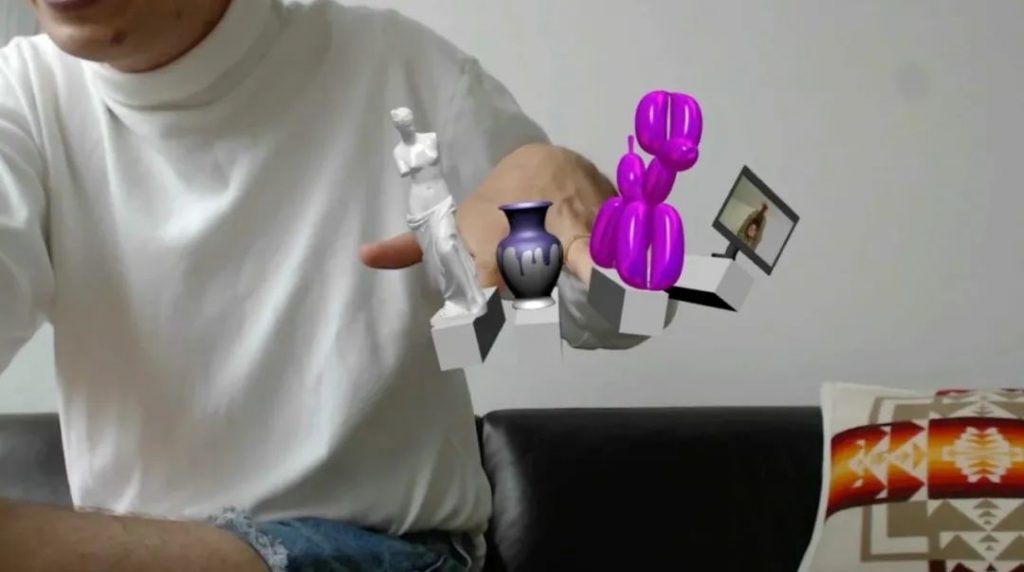
Jeremy Bailey,2014,Performance, Video,5′49″
In Nail Art Museum (2014), Bailey invents a new augmented reality software that allows him to curate and host exhibitions—from Renaissance to contemporary art—on his fingernails at the click of an imaginary button. His works raise the pertinent question of whether his performances are comedy sketches or our future reality.
New Update Available – Version 2.1
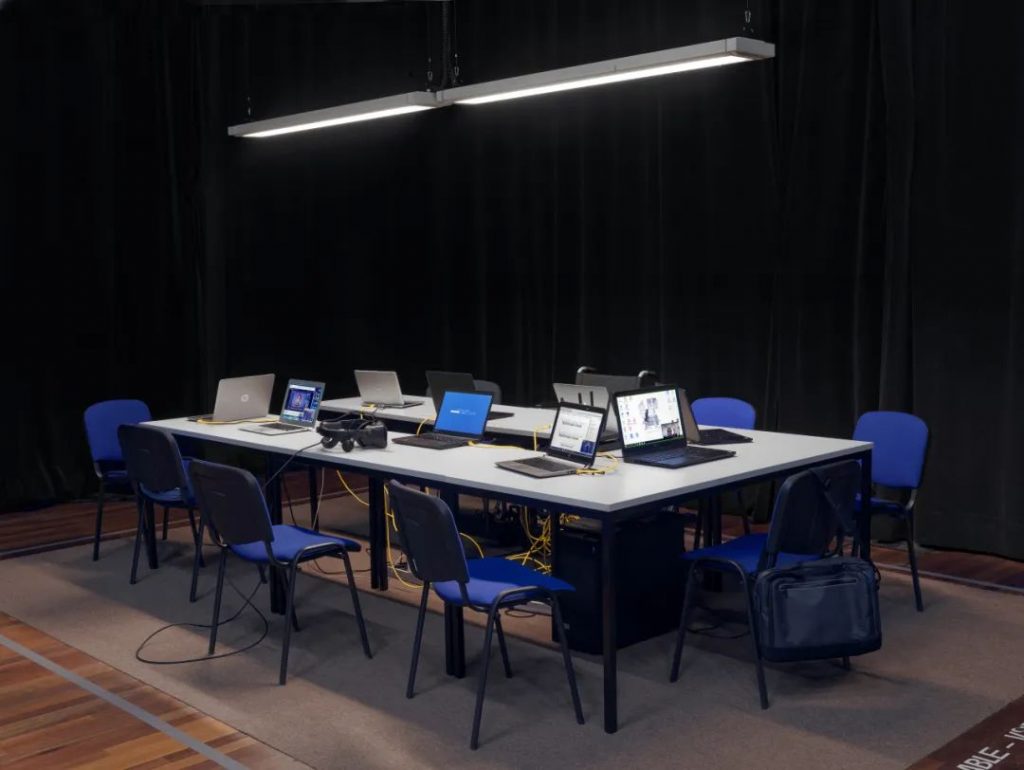
Jeroen van Loon,2022,VR installation (9 laptops, 1 VR headset, 1 VR pc, 5 Tables, 9 Chairs, 1 Carpet),480 × 320 × 110 cm,13′10″ (VR duration)
New Update Available – Version 2.1 is a VR installation in which you attend a computer course for the elderly hosted in a metaverse type of VR network. The conversations you hear are audio clips from a real computer course (recorded in 2018-2019), adding an identifiable, funny and above all human layer to the experience. Through these conversations you experience how each of the participants deal with problems of digitalisation within their lives.
The VR installation is presented as a physical replica of a computer course. Through a realistic setting of office furniture and laptops, this one-person VR experience lets you take part in a single computer course session as people log on and eventually log out at the end, and so the narrative structure is more about documenting the communal process and relationship dynamics within this community, which is recontextualized by setting the time in the distant future.
The nine laptops in the installation are synced with the main VR experience and show what the other virtual participants are doing. This way the work offers two storylines: one main VR narrative and nine smaller individual narratives presented through the laptops which can be seen by those who aren’t wearing the VR headset.
New Update Available – Version 2.1 questions if we need better, smarter and more ‘high-tech’ technology to erase digital illiteracy, or, if there will always be a need for these computer courses, even in VR?
Credit:
VR/animation/hardware/software
By Sjoerd Mol
Sound design
By Arno Peters (Tape TV Productions)
Photos
By Gert Jan van Rooij
Made with generous support from
Hors Pistes (Centre Pompidou), 2022
Creative Industrie Fund NL
Mondriaan Fund
De Machinerie
New Update Available
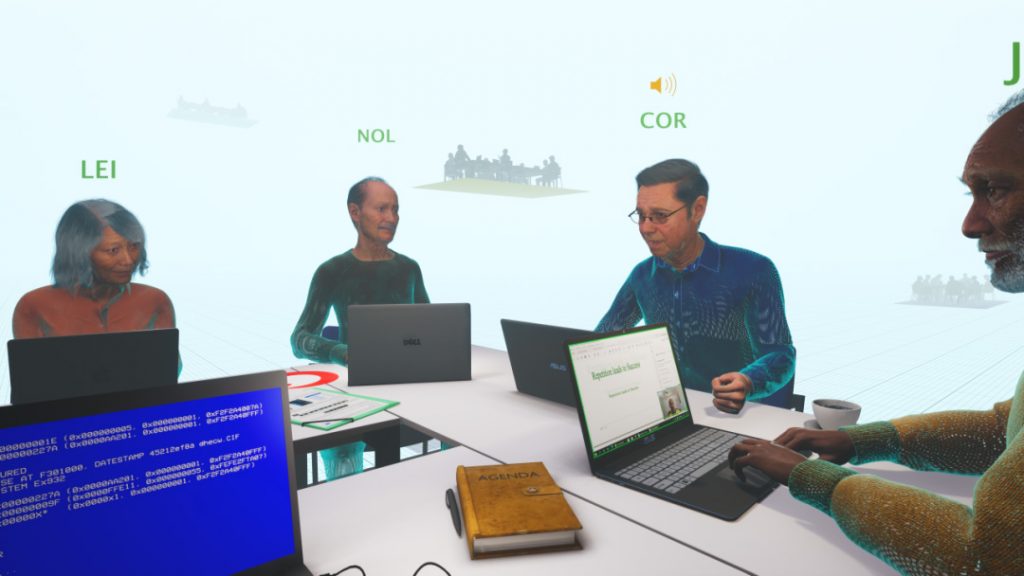
Jeroen van Loon,2022,4K video (color, sound),13′10″
New Update Available is a video version of the New Update Available–Version 2.1 VR installation in which you attend a computer course for seniors hosted in a fictional online VR network, a so called ‘metaverse’. During this computer course you will experience how each of the participants deal with problems of digitalisation within their lives: ranging from forgetting passwords to discussions on how to battle digital illiteracy itself.
Move the Way you Want
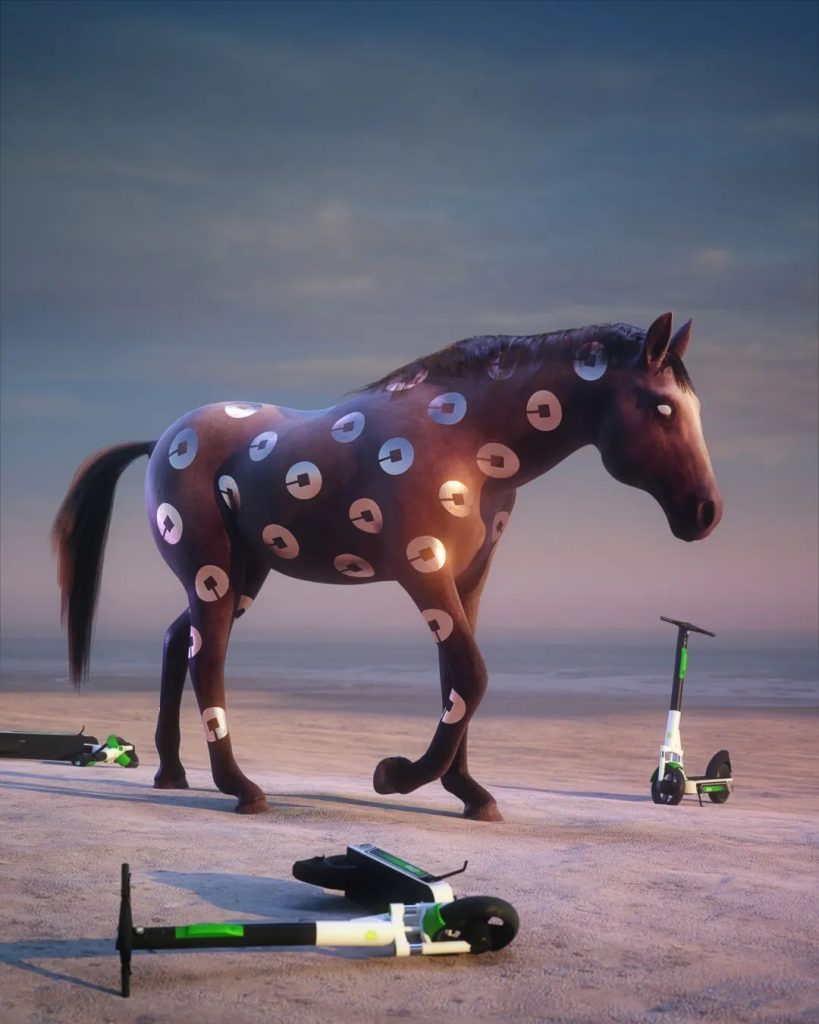
Jonathan Monaghan,2022,Video (color, sound),8′00″ loop
Courtesy bitforms gallery
Looping seamlessly, Move The Way You Want, is a large video projection of a mythical horse walking on the beach. The installation moves viewers between the past, present, and future. Ancient mythology where horses are symbols of majesty, freedom, and beauty collide with today’s hi-tech culture where scooters and electric bikes are devices of our urban, shared economy. The work confronts viewers with an illusionistic yet dehumanized world in which history and the digital age merge into a surrealist dreamscape filled with opulent architectural décor and familiar mass-produced items of today. At once fanciful and bleak, it portrays our consumerist culture in which technology takes over ecology.
Liminal Lands
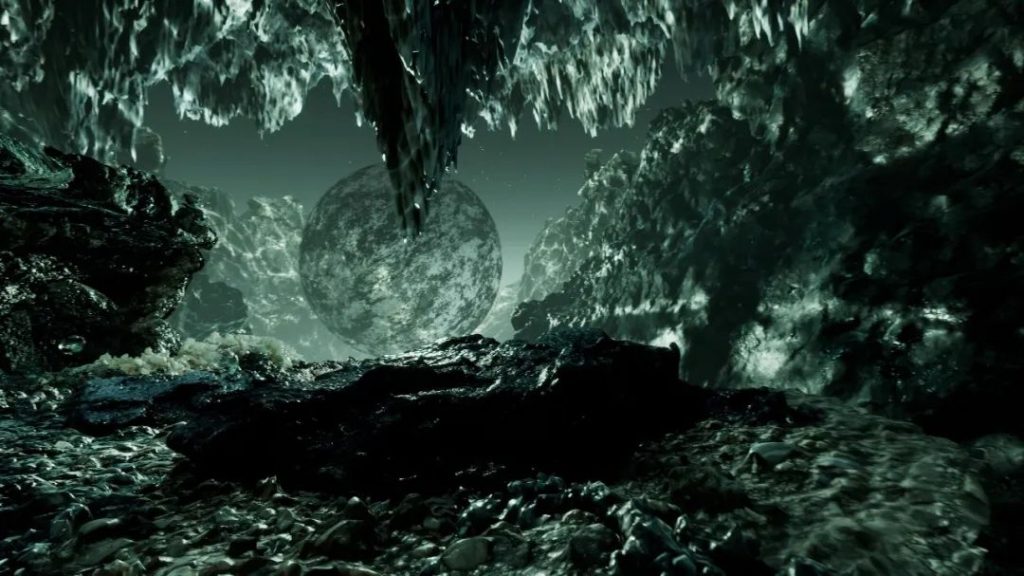
Jakob Kudsk Steensen,2021,2D Cinematic Video & VR,18′00″
Commissioned by Luma Arles
Liminal Lands draws attention to the lesser-explored spaces that are not bound to the phenomena we have to understand and appreciate in our daily lives. Interested in symbiotic coexistence, micro-macro scales of existence and multi temporal realities, the artist localizes his focus in a specific area of the Camargue, the wetlands of the Rhone delta, and the area of the Salin de Giraud. It is a landscape formed 7000 years ago, transformed through cultivation for its salt through time, but connected to energies from an ancient sea at the edge of the mediterranean. From December 2019 to Summer 2020, the artist records visuals and sounds of silent and unseen to us organic qualities – documenting hyper local rhythms of life across the landscape as it crystallizes, forming a mantle of salt across colorful worlds of algae, bacteria and organisms.
Curator

Wu Ziyang is an artist based in New York and Hangzhou, currently teaching at the School of Intermedia Art at the China Academy of Art, and is a former member of NEW INC at the New Museum. With an MFA from the Rhode Island School of Design, and a BFA from the Florence Academy of Fine Arts, his video, AR, AI simulation and interactive video installation have exhibited internationally, including Institute of Contemporary Art (ICA) Philadelphia, Rhizome at the New Museum, Walker Art Center, Rochester Art Center, SXSW, Art Dubai, Hek Basel, Annka Kultys Gallery in London, Eigenheim Gallery in Berlin, Medici Palace, Milan Design Week, UCCA Center for Contemporary Art, Long March Space, Today Art Museum, and Song Art Museum in Beijing, How Art Museum, K11 and Ming Contemporary Art Museum in Shanghai, and Chengdu Biennale. His recent fellowships and residencies include “The Randall Chair” award at Alfred University; “Kai Wu” Interdisciplinary Studio residency, Media Art Lab, Times Museum; AACYF Top 30 under 30; Residency Unlimited; MacDowell Fellowship; Artist-in-residence at Institute for Electronic Arts (IEA); Winner of The ROCI Road to Peace by Robert Rauschenberg Art Foundation.
Artists
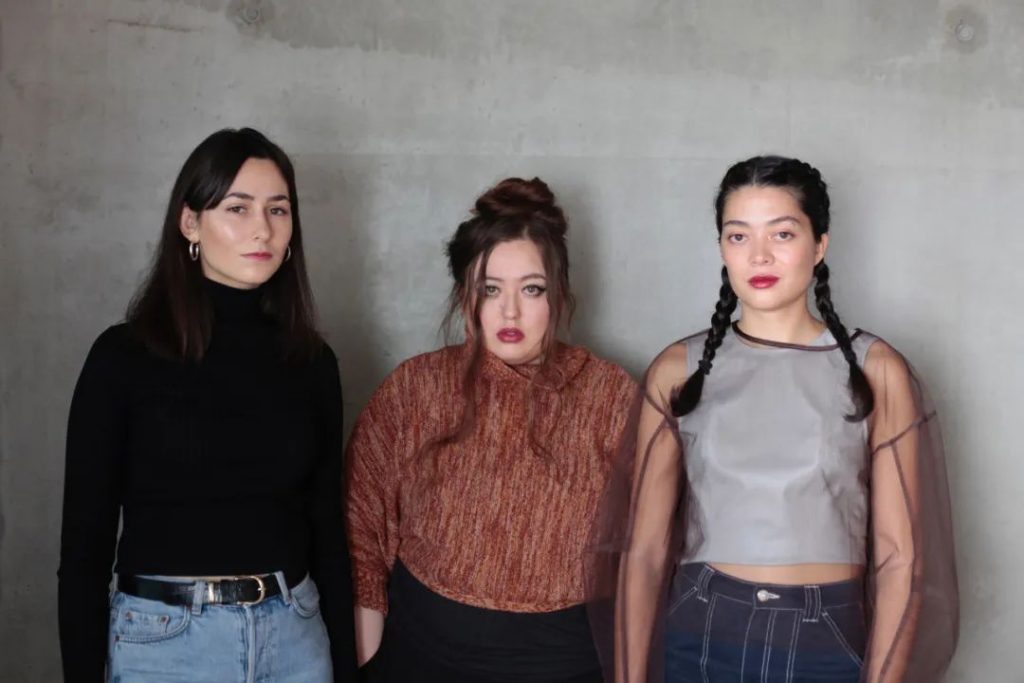
Keiken is an artist collective, co-founded by Tanya Cruz, Hana Omori and Isabel Ramos in 2015. Based between London and Berlin, they come from mixed diasporic backgrounds (Mexican/Japanese/European/Jewish).
Keiken’s collective title is taken from the Japanese word for experience; the lived experience being an idea at the core of their practice. They are collaboratively building and imagining speculative futures to simulate and test-drive new structures and ways of existing. Tethered to the idea of experience, Keiken explore the nature and future of consciousness in every facet of their practice.
They do this through filmmaking, gaming, installation, Extended Reality (XR), blockchain, and performance. Along the way, they also develop their own tools and technologies.
Keiken are currently working on their ongoing worldbuilding project, Morphogenic Angels. It is a video game series, set in an ever-evolving universe 1000 years from now, unfolding in a radically different time and space that transcends our current political, societal, financial, and subjective reality.
Keiken are a winner of the inaugural Chanel Next Prize and are residents at Somerset House, London. Recent selected exhibitions include: Helsinki Biennial (FL), HAU Hebbel am Ufer, Berlin (DE) (2023), CO Berlin (DE); Wellcome Collection, London (UK); ARKO Art Centre, Seoul (KR); Julia Stoschek Collection, Dusseldorf (DE); Onassis, Athens (GR); Photographers Gallery, London (UK) (2022); 2nd Thailand Biennale, Korat (TH); House of Electronic Arts HEK, Basel (CH); Francisco Carolinum, Linz (AU); 17th Venice Architecture Biennale, Venice (IT); Tokyo Photographic Art Museum, Tokyo (JP) (2021); FACT, Liverpool (UK); Frankfurter Kunstverein, Frankfurt (DE); transmediale, Haus der Kulturen der Welt HKW, Berlin (DE) (2020); Institute of Contemporary Arts ICA, London (UK); Jerwood Arts, London (UK) (2019).
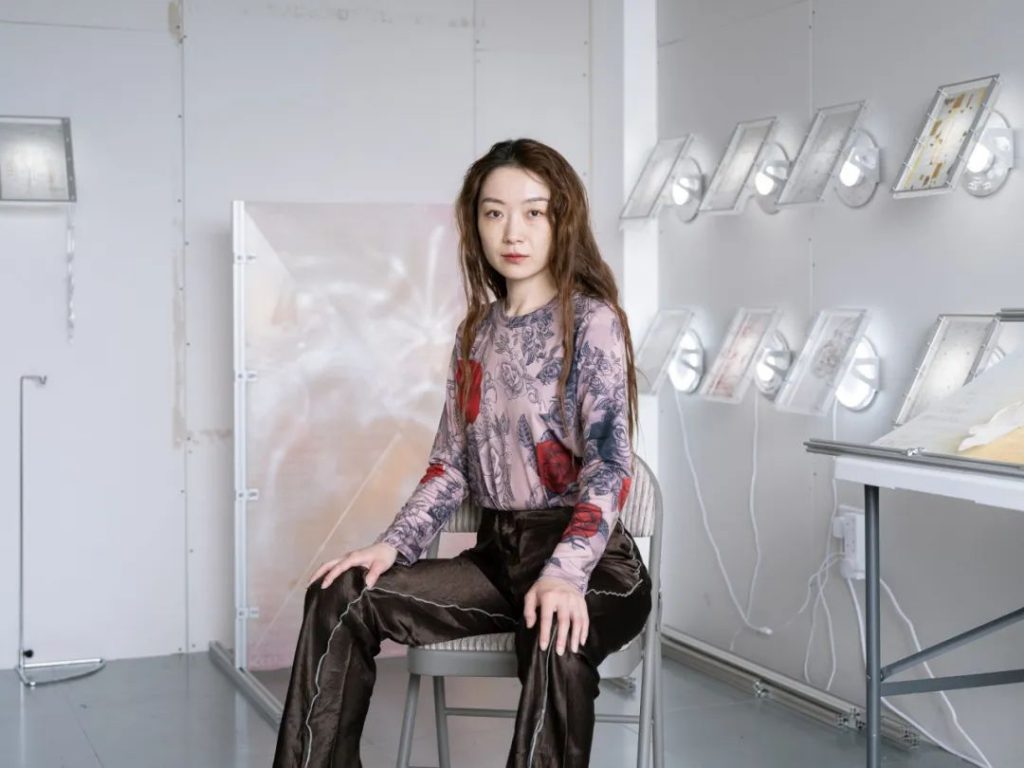
Liu Xin (b. 1991, Xinjiang/China) is an artist and engineer. Xin is the Arts Curator in the Space Exploration Initiative at MIT Media Lab and an artist-in-residence at SETI Institute. She creates experiences/experiments to take measurements in our personal, social, and technological spaces in a post-metaphysical world: between gravity and homeland, sorrow and the composition of tears, gene sequencing, and astrology. Her recent research and interest center around the verticality of space, extraterrestrial explorations, and cosmic metabolism.
She has been commissioned and included in by permanent public collections and institutions including M+ Museum (Hong Kong), KADIST Foundation (US & France), Ars Electronica (Austria), Rhizome (USA), Media Art Xploration Festival (USA), Onassis Foundation (US &Europe) X Museum(China), and Abandon Normal Devices Festival (UK). She has joined several residency programs including Queens Museum Artist Studio program, New INC, Watermill Center and Pioneer Works. She is an advisor for LACMA Art+Tech Lab and a faculty member at The Terraforming, a new research program at Strelka Institute in 2020-2021. Xin graduated from MIT Media Lab with a master’s degree in Media Arts and Sciences after her M.F.A from Rhode Island School of Design and B.E from Tsinghua University in Beijing (Measurement, Control Technology, and Instrument). Her first US institution solo exhibition, Seedlings and Offsprings was held at Pioneer Works, New York in July 2023. Additionally, she is the Arts Curator in the Space Exploration Initiative in MIT Media Lab, a member of the inaugural ONX studio program founded by New Museum and Onassis NY and Silver Arts Project in the World Trade Center. She is also an artist-in-residence in SETI Institute. She is the recipient of numerous awards and residencies, including Porches Chinese Young Artist of the Year 2021, Forbes 30 under 30 Asia, X Museum Triennial Award, the Van Lier Fellowship from Museum of Arts and Design, Sundance New Frontier Story Lab, inaugural Europe ARTificial Intelligence Lab residency with Ars Electronica, SXSW Interactive Innovation Award, Core 77 Interaction Design Award, Fast Company Innovation by Design Award, Huayu Youth Award Finalist and Creative Capital On Our Radar.

zzyw is an art and research duo formed by researcher-educator QI Zhenzhen and designer-engineer WANG Yang. This group creates software applications, real-time simulations, and writings, which serve as tools to study the impact of computation on culture and education. zzyw has been a member of the New Museum’s cultural and technology incubator NEW INC; a resident artist at the critical computing center EYEBEAM in New York, a tech resident artist at the art and science center Pioneer Works, and a resident artist at the independent gaming venue Babycastles. zzyw has also taught at New York University, The Cooper Union, and the University of Connecticut.
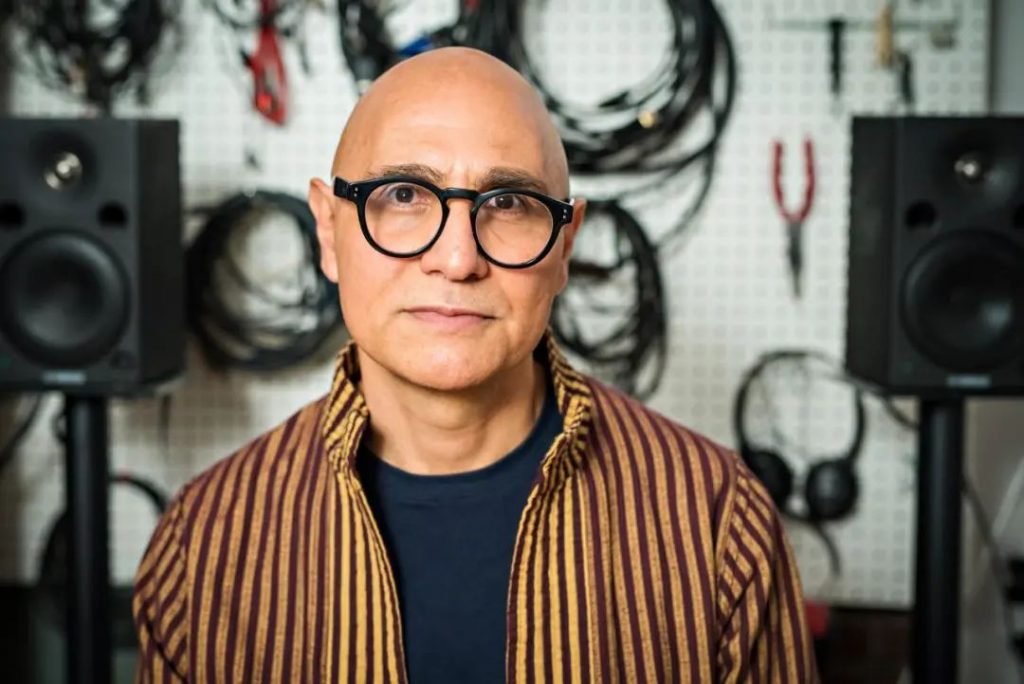
Andrew Demirjian builds linguistic, sonic and visual environments that disrupt habituated ways of reading, hearing and seeing. His interdisciplinary artistic practice examines structures that shape consciousness and perception, questioning frameworks that support the status quo and limit thought. The works are often presented in non-traditional spaces and take the form of multi-channel audiovisual installations, generative artworks, video poems, augmented reality apps and live performances.
Andrew is currently a Smithsonian Artist Research Fellow at the National Museum of American History and the Cooper Hewitt Museum of Design investigating the material culture of timekeeping, labor and leisure. Andrew’s work has been exhibited at The Museum of the Moving Image, The New Museum – First Look: New Art Online, Fridman Gallery, Eyebeam, The Arab American National Museum, the Ford Foundation Gallery, Transformer Gallery, the Center for Book Arts, The Newark Museum and many other galleries, festivals and museums. MacDowell, MIT Open Documentary Lab, Nokia Bell Labs, Puffin Foundation, Artslink, Harvestworks, Rhizome, Diapason, The Experimental Television Center, The Bemis Center, LMCC Swing Space, the New Jersey State Council on the Arts are among some of the organizations that have supported his work. Andrew teaches theory and production courses in emerging media in the Film and Media Department and the Integrated Media Arts MFA program at Hunter College.
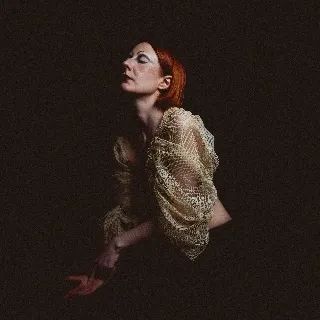
An audio composer, choreographer, and sculptor known for large-scale performances, Kinlaw further develops their framework for connectivity of physicality and sound into The Sigh of my Hand. Their role as an artist is to identify impulses and meaningful connections around mind and perception, creating avenues for group and individual performance and perspective. The urgency of this work pertains to the methods of process to produce new conditions of movement/sound production in connection with psychoacoustics.
Kinlaw’s performance works have been featured in several museums and arts institutions, including MoMA, MoMA PS1, MOCA, The New Museum, Pioneer Works, and Mana Contemporary. In 2022, Kinlaw was a Pioneer Works Musician-in-Residence, as well as a member of New Inc at the New Museum, with work focusing on Experiments in Art and Technology and psychoacoustical research at Bell Labs.
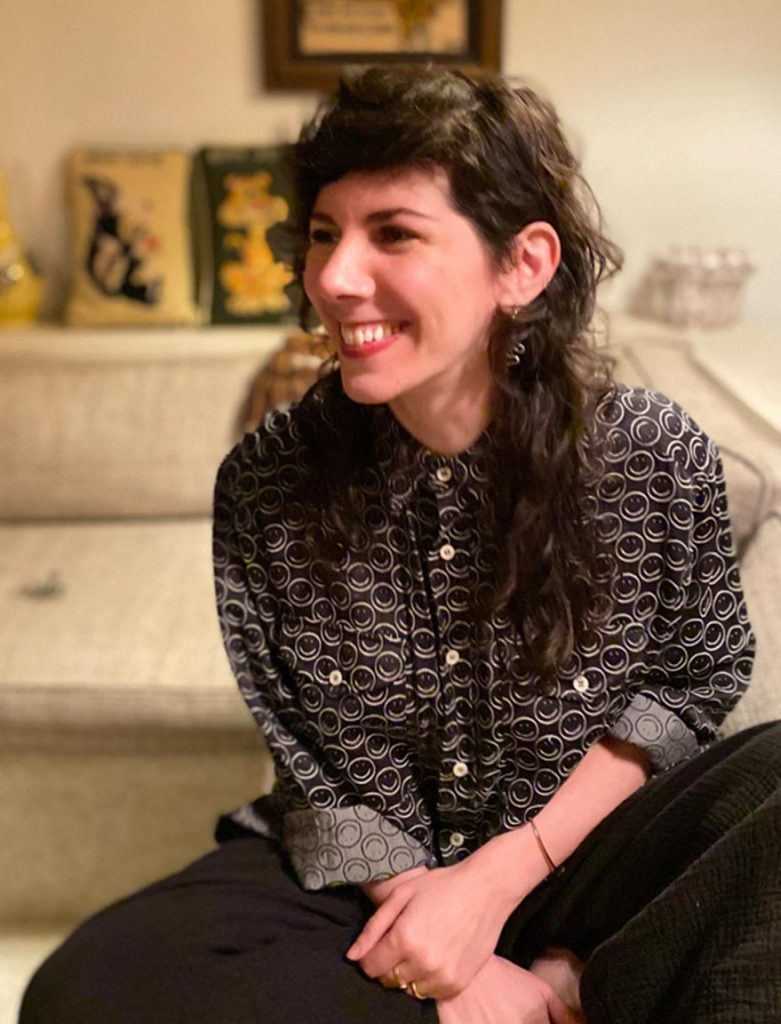
Sarah Rothberg creates playful, poetic, usually-a-bit-weird experiences that invite you to reconsider your relationship to the world around you. These take many forms ranging from VR/AR to installation, performance, video, writing, workshops.
Sarah’s work exists in a variety of contexts: at galleries, museums, festivals, on google docs, at the consumer electronics expo, screens in the NYC Subway system, Apple stores around the world, zoom calls, secret twitter accounts, or the MoMA. Some hosts have included: bitforms gallery, Rhizome,org, NRW-forum, MTA Arts, Sotheby’s S2, CultureHub, Gray Area Foundation.
Sarah is on the faculty at NYU (Interactive Telecommunications Program), a member of ONX Studio, and a mentor/former-member at NEW INC. Sarah is part of collaboratives: MORE&MORE UNLIMITED, which facilitates workshops for imagining changed worlds, and IS THIS THING ON? a post-web2 experiment in artist-driven livestreaming. Sarah is a 2023 Jerome Hill Artist Fellow.
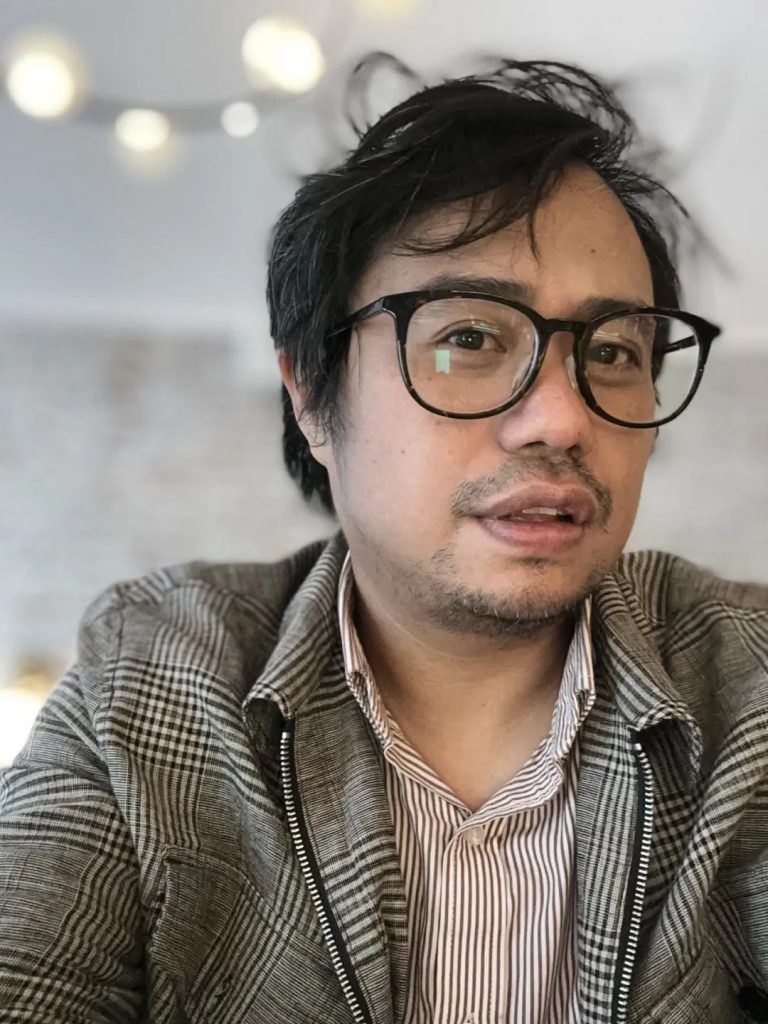
Mark Ramos is a Brooklyn-based new media artist. Mark makes fragile post-colonial technology using web/software programming, physical computing (using computers to sense and react to the physical world), and digital sculpture/fabrication to create interactive work that facilitate encounters with our own uncertain digital futures. Mark is deeply committed to the ethos of open source: the free sharing of information and data + creative uses of technology.
Mark has exhibited his work and lectured widely both online and AFK including as part of Rhizome’s First Look: New Art Online with the New Museum of Contemporary Art in NYC, Yerba Buena Center for the Arts in San Francisco, the Times Museum in Beijing, the Sichuan Biennial, Arebyte Gallery in London, and at the Peter Weibel Institute for Digital Culture in Vienna.
He teaches Art after the Internet in the MFA Fine Arts Department at the School of Visual Arts, Form and Code at Pratt Institute, as well as Web Programming and Computer Principles in the Computer Science Department at NYU.
You can also find him playing drums for various bands in Brooklyn.
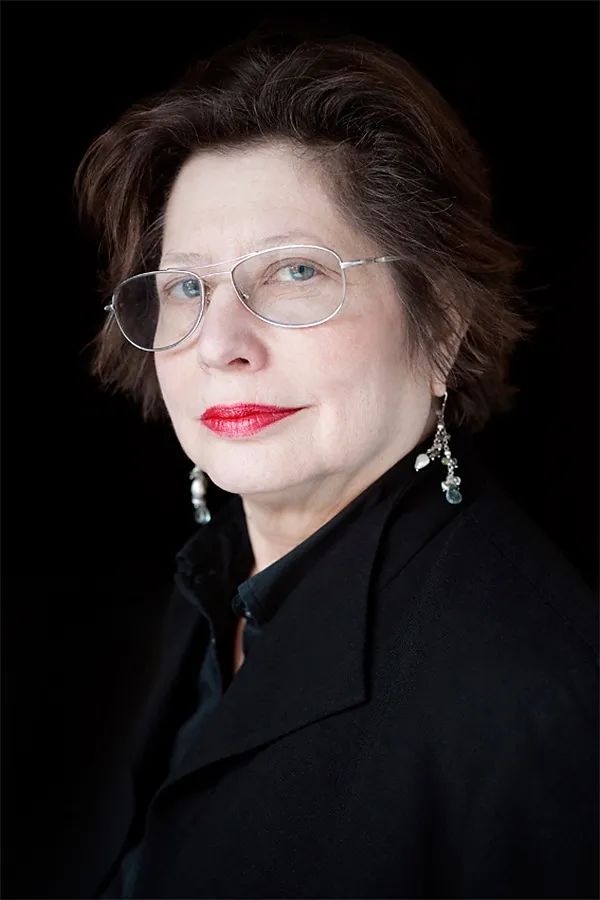
Suzanne Anker is a visual artist and theorist working at the intersection of art and the biological sciences. Her practice investigates the ways in which nature is being altered in the 21st century. Concerned with genetics, climate change, species extinction and toxic degradation, she calls attention to the beauty of life and the “necessity for enlightened thinking about nature’s ‘tangled bank’.” Anker frequently works with “pre-defined and found materials” botanical specimens, medical museum artifacts, laboratory apparatus, microscopic images and geological specimens. She works in a variety of mediums ranging from digital sculpture and installation to large-scale photography to plants grown by LED lights.
Her work has been shown both nationally and internationally in museums and galleries including the Beijing Art and Technology Biennale at CUBE, China; the Wuhan Biennale, China; the Anyang Public Art Project, Korea; the Everson Museum of Art, Syracuse, NY; Daejeon Biennale, Korea; ZKM, Karlsruhe, Germany; Walker Art Center, Minneapolis, MN; the Smithsonian Institute, Washington, D.C.; the Phillips Collection, Washington, DC; P.S.1 Museum, New York, NY; J. Paul Getty Museum, Los Angeles, CA; the Berliner Medizinhistorisches Museum der Charité, Berlin, Germany; the Center for Cultural Inquiry, Berlin, Germany; the Pera Museum, Istanbul, Turkey; the Museum of Modern Art, Kyoto, Japan; and the International Biennial of Contemporary Art of Cartagena de Indias, Colombia. Anker’s exhibitions have been the subject of reviews and articles in the New York Times, Artforum, Art in America, Flash Art, and Nature.
Her books include The Molecular Gaze: Art in the Genetic Age, co-authored with the late sociologist Dorothy Nelkin, published in 2004 by Cold Spring Harbor Laboratory Press, Visual Culture and Bioscience, co-published by University of Maryland and the National Academy of Sciences in Washington, D.C. Her writings have appeared in Art and America, Seed Magazine, Nature Reviews Genetics, Art Journal, Tema Celeste and M/E/A/N/I/N/G. Her work has been the subject of reviews and articles in the New York Times, Artforum, Art in America, Flash Art, and Nature. She has hosted twenty episodes of the Bio Blurb show, an Internet radio program originally on WPS1 Art Radio, in collaboration with MoMA in NYC, now archived on Alana Heiss’ Clocktower Productions.
She has been a speaker at Harvard University, the Royal Society in London, Cambridge University, Yale University, the London School of Economics, the Max-Planck Institute, University of Leiden, the Hamburger Bahnhof Museum in Berlin, the Courtauld Institute of Art in London, Banff Art Center any many others. Chairing SVA’s Fine Arts Department in NYC since 2005, Ms. Anker continues to interweave traditional and experimental media in her department’s new digital initiative and the SVA Bio Art Lab.
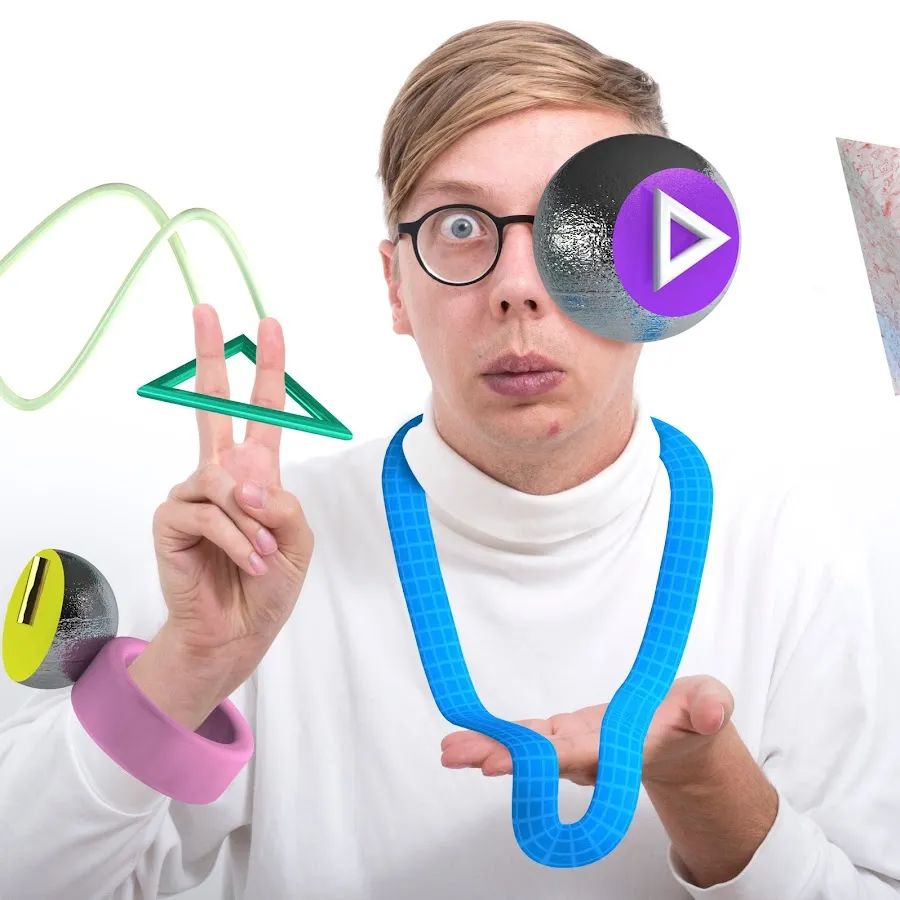
Jeremy Bailey is a Toronto-based self-proclaimed Famous New Media Artist. “Since the early noughties Bailey has ploughed a compelling, and often hilarious, road through the various developments of digital communications technologies.”(Morgan Quaintance, Rhizome.) His work has been presented widely including solo and group exhibitions at Panke. Gallery in Berlin, Whitechapel Gallery in London, LIMA in Amsterdam and Museums Quartier in Vienna. Commissions include projects for The MCA Chicago, FACT in Liverpool and The New Museum in New York.
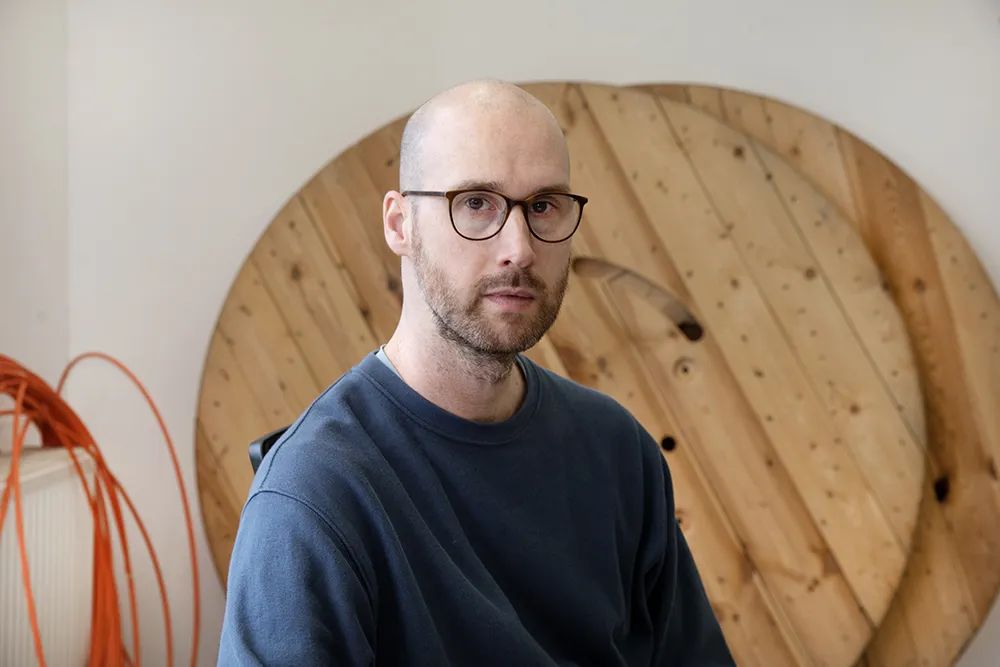
Jeroen van Loon (1985) is a Dutch artist researching and visualising current digital culture through the lens of ephemerality and permanence. His work has been exhibited internationally at venues such as Centre Pompidou, Transmediale, IDFA Doclab, Aksioma, Central Museum, HMKV | Dortmunder U, IMPAKT festival, SPRING performing arts festival, Nemo Biennale, KIKK Festival and MU Artspace. He was nominated for the New Technological Art Award (NTAA) 2022 and is part of the Brave New World Speaking Agency.
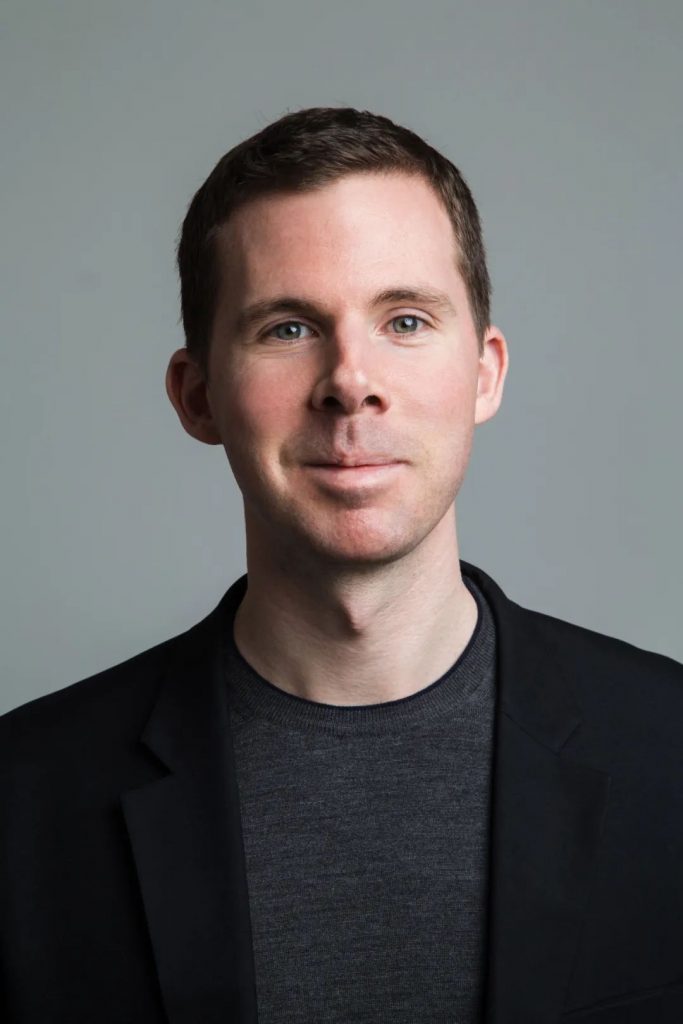
Jonathan Monaghan is a contemporary artist whose practice explores the transformative effects of technology and consumer culture on perceptions of reality. His multidisciplinary works combine ancient mythologies, commercial architecture, and corporate logos to create a surreal and mythical world that blurs the boundaries between the natural and the artificial.
Drawing from his background in video game design, Monaghan’s artworks utilize digital technologies to create visually extravagant and immersive experiences that engage in critical dialogue about the digital age. With a satirical edge and sense of humor, Monaghan’s works challenge viewers to examine their own complicity in the perpetuation of a society dominated by technology and conspicuous consumption.
Jonathan Monaghan has exhibited his work internationally, including solo exhibitions at the Walters Art Museum, Baltimore; Spazio Ridotto, Venice; and Market Gallery, Glasgow. His work is in numerous collections including the Crystal Bridges Museum of American Art, Bentonville, Arkansas, and the Washington, DC, Art Bank Collection. Monaghan engages with cutting-edge technologies as part of his artistic practice, including blockchain authentication of his digital works and 3D printing.
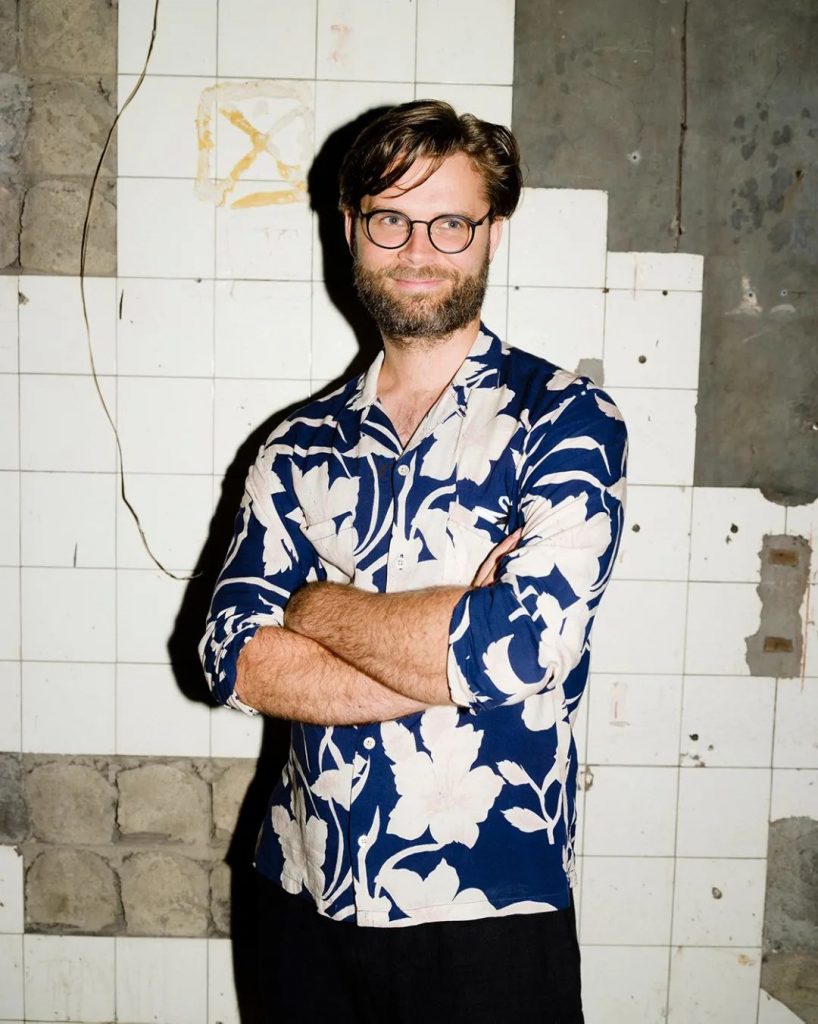

跨媒体艺术学院是中国美术学院最新锐的学科集群,也是中国第一所真正意义上的实验艺术学院,聚集了一批具有国际影响力的艺术家与学者,拥有一支高水平的国际化教学团队,2010年被美国《亚太艺术》杂志评为“亚洲最值得期待的当代艺术教育机构”。
跨媒体艺术学院的学术宗旨在于:促进媒体技术开发,推动当代艺术实验,从媒体中发掘创意,从技术中发显人文;以媒体实验、艺术创作、社会思想、策展实践四维互动的格局,在国际平合上推动当代艺术的跨学科研究和跨领域实践。学院专业一方面提供最前沿的新媒体艺术创作与媒体设计的训练,另一方面,强调社会思想与艺术策划的智识培养;注重媒体手段与思想方法的综合训练,致力于培养掌握新媒体技术、具有实验精神和创新能力的当代艺术与媒体创意人才。
